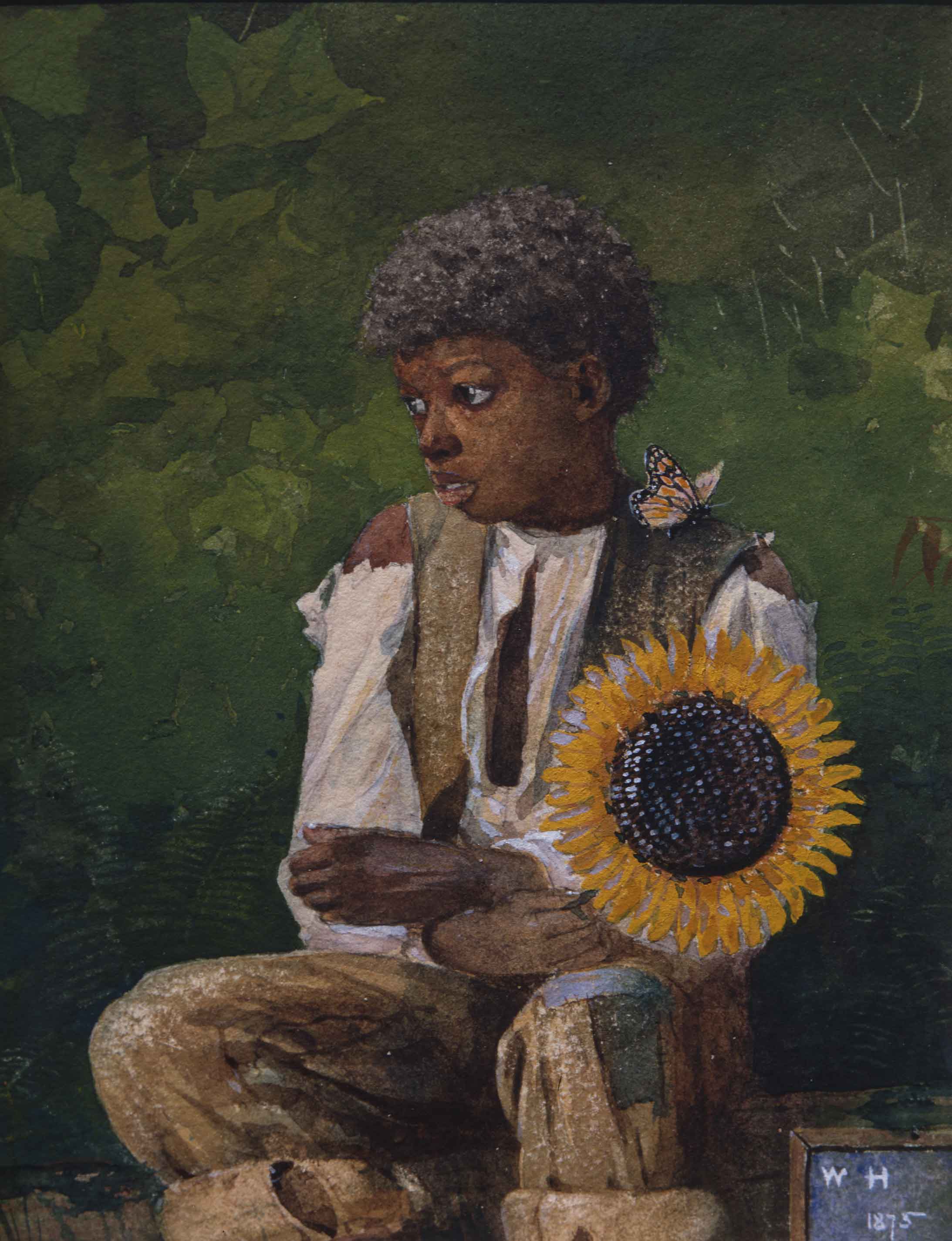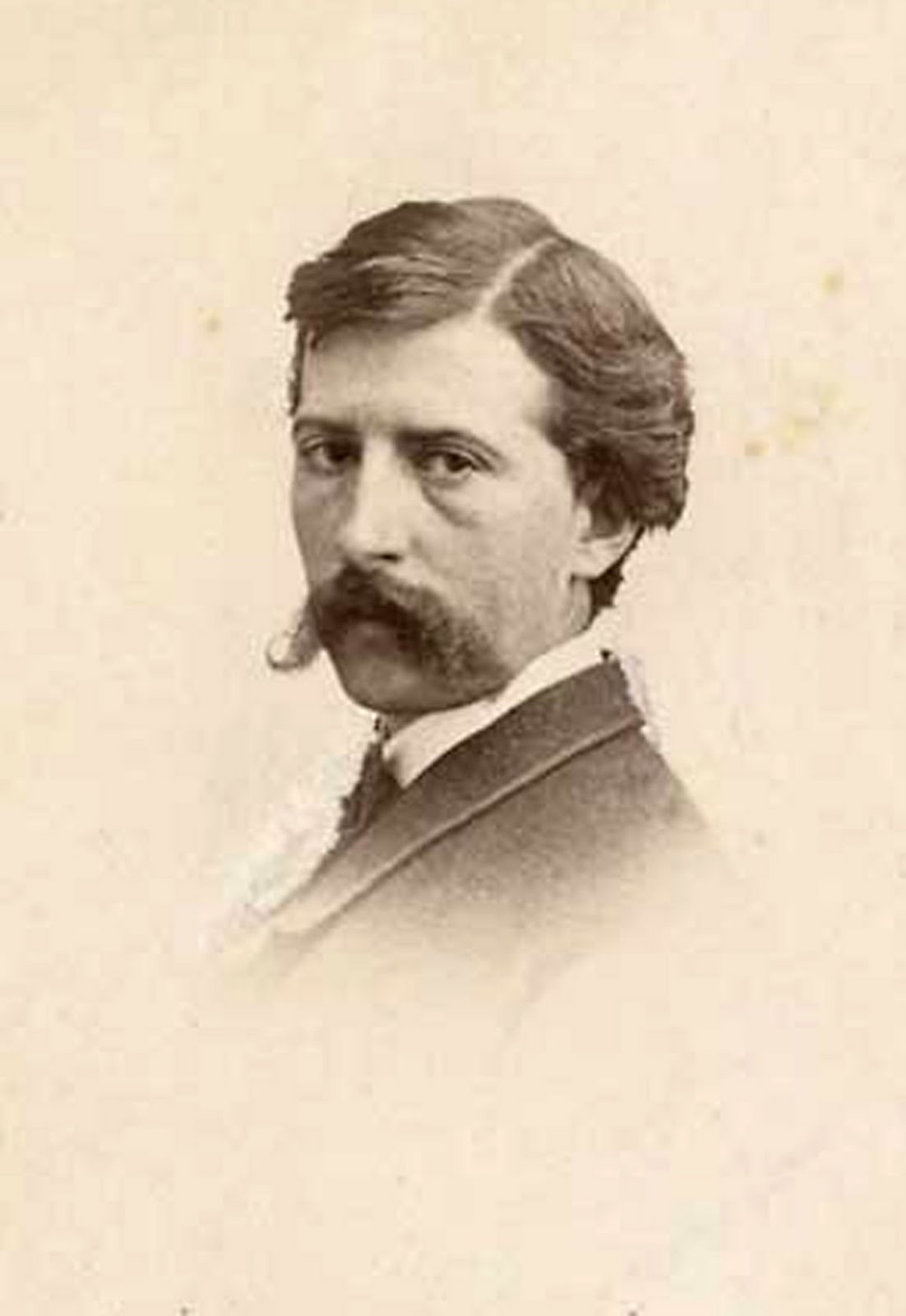In the decade following the conclusion of the Civil War, Winslow Homer painted several images of African Americans, including this one. In this small, intimate format, Homer shows a lone child, wearing partially torn and patched clothing, sitting on a wood log in a lush green forest. With his arms crossed at the wrists as if bound, the boy holds a large, brilliant sunflower in his right hand. A monarch butterfly, a symbol of freedom and of metamorphosis, rests on the boy’s left shoulder. The image, although paternalistic, speaks to the importance of education for Black citizens as well as the difficulty in achieving it.
During the Reconstruction era, basic literacy skills were required for Black citizens to secure their own rights, and schools dedicated to freed people emerged in many parts of the South even before the war ended. The November 9, 1867, edition of Harper’s Weekly included an article stating, “The alphabet is an abolitionist. If you would keep a people enslaved, refuse to teach them to read.”
We present today's work and description thanks to the Georgia Museum of Art.
P.S. Read the fascinating story of Black women in Western art - click here!
P.P.S. Don't forget to check our DailyArt Prints, created with papers and pigments of the highest quality; they look like they are painted by the artists themselves. Check them out here.


 Winslow Homer
Winslow Homer